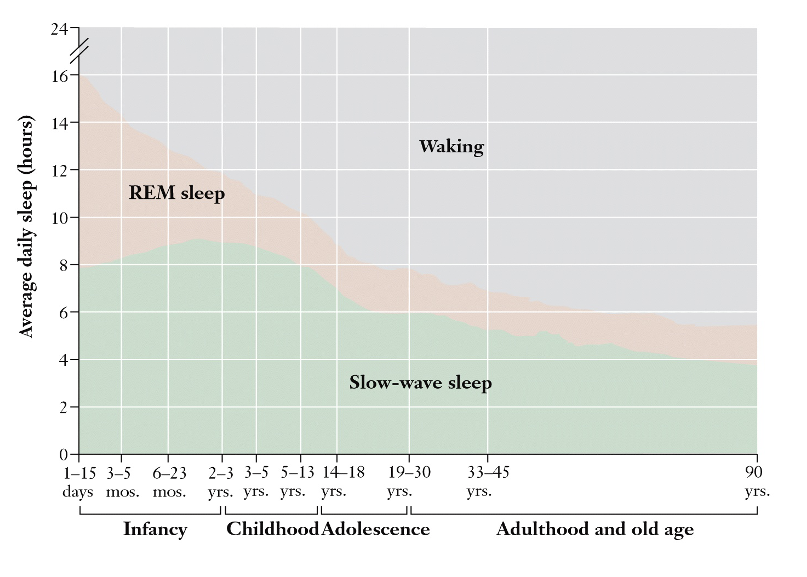sleep and dreams
0.0(0)
Card Sorting
1/23
Earn XP
Description and Tags
Study Analytics
Name | Mastery | Learn | Test | Matching | Spaced |
|---|
No study sessions yet.
24 Terms
1
New cards
average adult sleep needs per night
varies; 7-8 hrs
2
New cards
1/3
most people spend __ of their lives sleeping
3
New cards
EEG (electroencephalogram)
measures electrical activity of the brain, using metal discs. how we observe sleep cycles. brain cells communicate via electrical impulses and are active all the time, even when asleep
4
New cards
90 minutes
how long does each sleep cycle last
5
New cards
bio-psychological influences on sleep patterns
psychological - stress/anxiety; biological - waking up and not realizing it, comfort/discomfort, sleep disorders, temperature, caffeine/alcohol, exposure to light, exercise before bed, eating heavy meals
6
New cards
consciousness
an alert cognitive state in which you are aware of yourself and your situation; individual awareness of your unique thoughts, memories, feelings, sensations, and environments
7
New cards
Stages of sleep
- NREM-1 (stage 1)
- NREM-2 (stage 2)
- NREM-3 (stage 3)
- REM (stage 4)
- NREM-2 (stage 2)
- NREM-3 (stage 3)
- REM (stage 4)
8
New cards
NREM-1
brief transition period between falling asleep and sleeping more soundly, around 5 minutes, hypogenic sensations
9
New cards
hypnogogic senations
hallucinations that happen when you are falling asleep, moving patterns and shapes, vivid images of faces, animals, scenes; feeling of being lifted up into the air?
10
New cards
NREM-2
stage 2; appearance of sleep spindles (short bursts of rapid, high-voltage waves); ~20 minutes, where talking normally happens
11
New cards
NREM-3
increases in slower, high voltage delta waves; deep sleep, hard to wake yo, about 30 minutes in the first cycle, but decreasing with each cycle until eventually NREM-3 disappears
12
New cards
REM
characterized by low-amplitude, fast, irregular beta waves (resembling awake state); called "paradoxical sleep;" about 10 minutes in the first sleep cycle, but increasing with each cycle
13
New cards
changes in sleep over the course of life

14
New cards
why do we sleep
recuperation and restoration, preservation and protection, memory consolidation/problem solving, growth process
15
New cards
recuperation and restoration
one of the four theories of why we sleep; sleep is needed to restore the brain tissue and body processes; (e.g. the immune system is sensitive to sleep disruption)
16
New cards
preservation and protection
sleep evolved to preserve energy and protect organisms from danger; species' sleep patterns correspond to their evolved characteristics
17
New cards
memory consolidation/problem solving
sleep restores, rebuilds, and synthesizes memories and enhances creative problem-solving processes
18
New cards
growth process
during sleep, the pituitary gland releases growth hormone necessary for muscle development
19
New cards
frued's wish-fulfillment theory of dreams
manifest (obvious) content and latent (symbolic) content of dreams
20
New cards
information-processing view of dreams
sifts, sorts, fixes information in memory
21
New cards
physiological function of dreams
provides needed stimulation for the development of neural connection
22
New cards
activation-synthesis theory of dreams
random neural activity beginning in the brainstem (pons) activates imagery and emotion that the cortex attempts to interpret
23
New cards
cognitive development theory
dreams reflect cognitive/brain maturation
24
New cards
threat stimulation theory
human dreaming has evolved because it promotes survival by allowing "practice" of threat perception, avoidance, and mastery